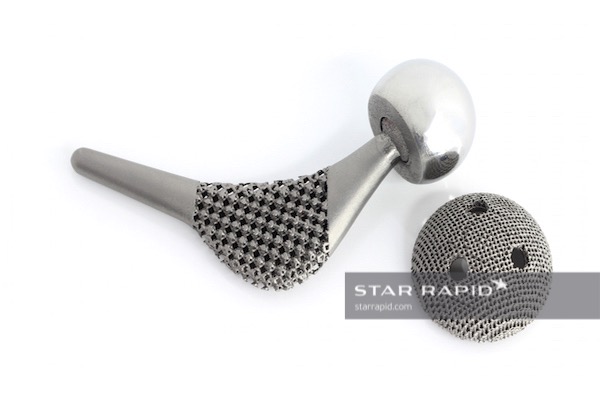2017 has seen a continuation of the trend in adopting 3D metal printing for demanding industrial applications. This has been especially true in the fields of aerospace, automotive and medical applications, but will undoubtedly disrupt other sectors as this transformative technology becomes more mature and better understood by product designers, engineers and manufacturers.
This is the general conclusion of a comprehensive report by SmarTech Publishing, a market research firm specializing in additive manufacturing. The highlights of their report have been recently published in Assembly Magazine’s 3D Printing in Metal. Please register for free to see the whole article, which prominently features Star Rapid’s founder Gordon Styles and a collection of comments and analyses from industry insiders on both the benefits and challenges of adopting metal 3D printing as an addition to conventional subtractive manufacturing.

3D printed medical parts
Rapid prototyping and low-volume manufacturing of specialty components continues to be the main market for 3D metal printing. But this will change as new techniques are developed and improved upon. The article makes clear that various technologies continue to evolve and diverge, each occupying a particular niche as the ecosystem responds to the need to make the applications faster, cheaper and more user-friendly.
As Gordon Styles makes clear, the only way to leverage the advantages of 3D printing is to carefully design specifically for this process. Join him and other industry veterans in discussing what we can expect in the next few years. We want our customers to be prepared for this revolutionary technology, one of the reasons we now offer free on-site 3D printing seminars as well as a series of online tutorials. When you’re ready to put our Renishaw AM250 DMLM printer to work on your next project, we’ll give you a free quotation and project review.
